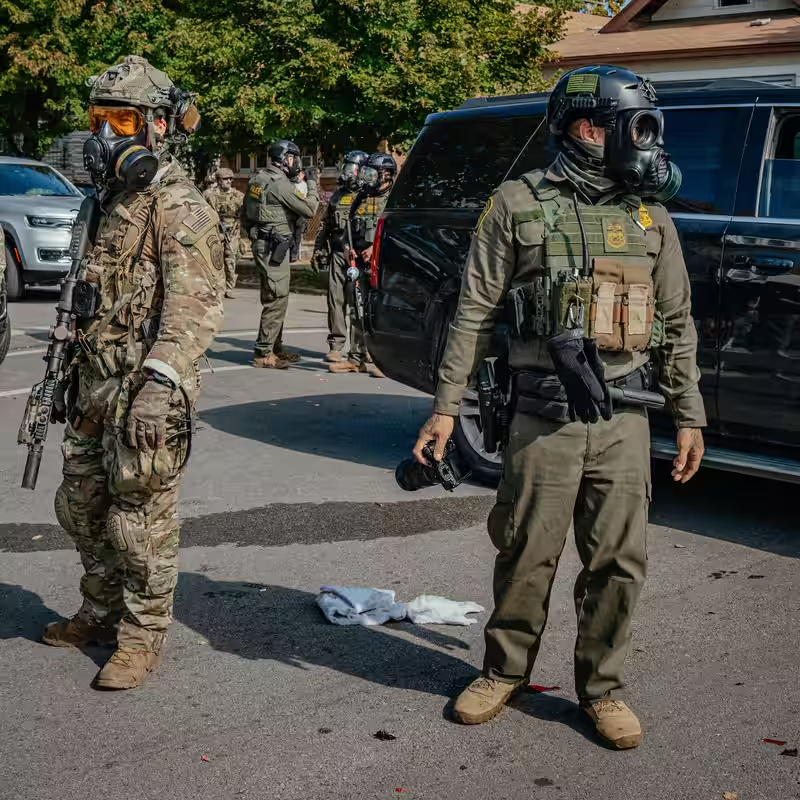In a landmark ruling that could reshape federal law enforcement transparency in Illinois, a federal judge has ordered immigration agents in the Chicago area to activate body cameras during arrests and public interactions—marking a rare judicial intervention into federal immigration operations.
The directive, issued Friday by U.S. District Judge Sara L. Ellis, applies to Immigration and Customs Enforcement (ICE) and Border Patrol agents who are already equipped with body-worn cameras and trained to use them. The order comes amid escalating tensions between federal authorities and local residents during a sweeping immigration crackdown under the Trump administration .
Why the Body Camera Order Matters
The body camera mandate is not a blanket requirement—it only affects agents who already possess the devices. Undercover operatives are exempt, and recordings aren’t required inside jails, detention centers, or ports of entry. Still, the move represents a significant step toward accountability in a region where federal agents have repeatedly clashed with protesters and journalists.
“This was not a suggestion. It wasn’t a hint,” Judge Ellis sternly told government attorneys during a Thursday hearing. “It was an order. So I will enter it today, and I will expect that it will be followed” .
Background: Protests, Tear Gas, and Alleged Brutality
The ruling stems from a lawsuit filed by media organizations, journalists, and demonstrators who accused federal agents of “a pattern of extreme brutality” aimed at silencing press coverage and peaceful protest. Incidents have centered around an ICE facility in Broadview, Illinois, and street-level enforcement operations across Chicago, where agents have reportedly used tear gas without adequate warnings .
Earlier this month, Judge Ellis issued a separate order limiting the use of chemical agents like tear gas and requiring agents to issue clear dispersal warnings before deploying force. The new body camera directive is designed to verify compliance with those rules.
Scope and Limitations of the Order
While historic, the order has clear boundaries:
- Applies only to agents who already have body cameras
- Excludes undercover operations
- Does not require recording in secure facilities (e.g., jails, ports)
- Covers 18 counties in northern Illinois, including all of Chicago
The Department of Justice raised logistical concerns, arguing that reviewing and redacting footage would strain resources. A DOJ lawyer also warned that the mandate “would improperly draw the judiciary into overseeing law enforcement’s daily operations” .
| Key Detail | Information |
|---|---|
| Issuing Judge | Sara L. Ellis, U.S. District Court, Northern District of Illinois |
| Effective Date | October 18, 2025 (with policy submission due by Oct. 24) |
| Agencies Affected | ICE, U.S. Customs and Border Protection (CBP) |
| Geographic Scope | 18 counties in northern Illinois, including Cook County |
| Next Court Hearing | Monday, October 20, 2025—federal officials must appear |
Political and Public Reaction
Department of Homeland Security spokesperson Tricia McLaughlin dismissed the ruling as “an extreme act of judicial activism” . Meanwhile, civil rights advocates welcomed the decision as a long-overdue check on federal power.
“Body cameras won’t solve everything, but they’re a start,” said Maria Lopez, director of the Illinois Coalition for Immigrant Justice. “People have a right to know how they’re being policed—especially when it’s federal agents operating on their streets.”
It remains unclear how many federal agents in the region currently carry body cameras. The devices were gradually introduced following a 2022 executive order encouraging their use across Homeland Security agencies—but adoption has been inconsistent.
[INTERNAL_LINK:body-camera-policies] For more on how body camera mandates affect law enforcement transparency nationwide, see our policy tracker.




